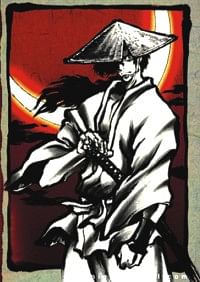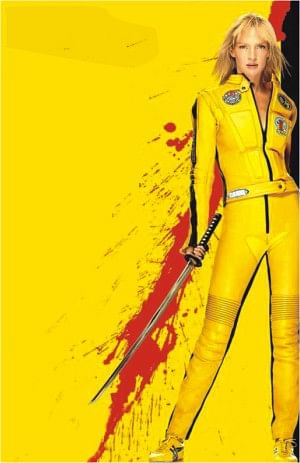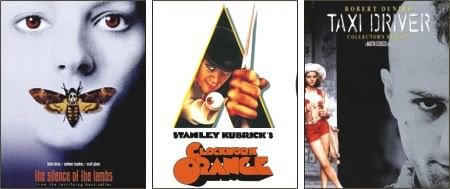
By Emil
 Every once in a while one tends to become a bit tired of playing games that require you to pay attention to detail, keep track of stories, and making sure not to die. Uh, okay, it doesn't happen that often. But, it happens. And when it does, one tends to resort to games like… minesweeper, hearts or pinball. Or maybe World of Goo. Or Audiosurf.
Every once in a while one tends to become a bit tired of playing games that require you to pay attention to detail, keep track of stories, and making sure not to die. Uh, okay, it doesn't happen that often. But, it happens. And when it does, one tends to resort to games like… minesweeper, hearts or pinball. Or maybe World of Goo. Or Audiosurf.
You like music? Cool. You like the feel of speed? Yeah, so do I. You like to feel the speed with music rocking in the background? Damn, right. Audiosurf lets you do JUST that.
You control a hovering spaceship of many variants, each with its own special powers, and depending on the song you chose, you blast off at breakneck speed, a rushing experience of adrenaline and extreme speed or you amble along at a moderately relaxed pace, something akin to taking a slow drive through the country.
The best feature of Audiosurf is the fact that the possibilities are nearly limitless. You can import any song you like, from a wide variety of file formats, including I believe, iTunes. The game analyses the track, and creates a track based on the beats and tempos. If it's a fast song, it's going to be a fast track with some awesome downward slopes that leaves you almost breathless. If it's a slow song, then it's the other way around. You don't have control over your spaceship, in the sense, that there's no acceleration or deceleration to it. It all depends on the track.
You move your spaceship left or right, along three lanes. In a manner akin to Tetris, the track is waylaid with coloured blocks from the start, and as you move forward, your job is to collect the blocks, matching atleast 3 to score points. The type of shapeship determines gameplay. The Mono mode, there's just one colour, and another you have to avoid. In Pusher mode, you get to push the blocks left and right.
What's a racing game without speed, eh? To blast off at the speed of sound, burning rubber, while leaving behind an echo of Through Fire and Flames. Ah. If only you could do that in Dhaka and still not die, yeah?
Fires at Midnight by Blackmore's Night left me exhilarated, and Metallica's Die, Die My Darling cover of the Misfit song was like roller coaster designed by a guy with too many bumps in his head, while Sweet Child 'O Mine was pretty darn sweet indeed.
And if you're the Fruityloops kind of person, you can import your own created music, too. There's a global scoreboard- if you're connected to the Internet, you can upload your scores for any track, and see who else has played it, and what they scored.
This futuristic sci-fi game has enough neon light effects to make you think you're on the underside of the world, in the dark brawly alleys of some jaundiced city… Uh. That's just me, probably. Audiosurf is a game that will not get boring easily, as you try out your whole collection of music, song by song. It's short enough to pass the occasional bored moments, and it can be long enough to get you through the day. Simplistic graphics, soundtracks literally way better than the average racing game, and fun gameplay that bites the backside of NFS, Audiosurf is definitely worth the shot.
Rating: 4 stars out of 5.


By Kokoro-chan
Being one of the strongest human emotions, though severely ill natured, violence has been portrayed as a key ingredient in many literary components and works of art. Celebrated Japanese author Yamada Futaro's novels mostly deal with this concept, among other things. Two of these-- Basilisk and Ninja Scroll-- were adapted into manga and later, into anime, which, till this day, remain two of the most violent and intense material of their kind.
Manga
BASILISK The Manga
Rating: 18+
“For you and me, to find a place to live peacefully…there isn't such a place left for us…”
-- Gennosuke Kouga (chp 32)
The plot: After 400 years of hatred and blood-thirsty rivalry, the Iga and Kouga ninja clans finally have a chance at peace made possible by the arranged marriage of their leaders Oboro Iga and Gennosuke Kouga. However, the Tokugawa Shogunate's selfish schemes plunge them into war again, leaving both clans to choose between two extreme optionssurvival or annihilation.
Chapters: 34
 If one ever thought of manga as a limited mode of mere illustrations, often lacking the power of conveying exact kinetic notions (e.g. Naruto and Bleach, where the action sequences are rather confusing), Basilisk alters that concept entirely. Masaki Segawa has adeptly and appropriately visualised the intimidating energy behind the very word 'violence' through his powerful brush strokes and detailed facial expressions of the characters. The manga itself is fast-paced, with the dark action sketches blending into each other almost giving it a motion picture-esque feel. That's the beauty of Basilisk: it is shockingly 'alive' with a strong storyline, powerful characters and a bone-chilling atmosphere. The only drawback is probably the female lead Oboro, who seems quite stupidly out of place. The ending is also a little cliché, almost making it feel like a Japanese version of 'Romeo and Juliet'. However, this pedigree ends up adding a certain level of poignancy to the relationship between Oboro and Gennosuke, strengthening the main storyline and therefore, adding a distinct beauty to this brilliant masterpiece.
If one ever thought of manga as a limited mode of mere illustrations, often lacking the power of conveying exact kinetic notions (e.g. Naruto and Bleach, where the action sequences are rather confusing), Basilisk alters that concept entirely. Masaki Segawa has adeptly and appropriately visualised the intimidating energy behind the very word 'violence' through his powerful brush strokes and detailed facial expressions of the characters. The manga itself is fast-paced, with the dark action sketches blending into each other almost giving it a motion picture-esque feel. That's the beauty of Basilisk: it is shockingly 'alive' with a strong storyline, powerful characters and a bone-chilling atmosphere. The only drawback is probably the female lead Oboro, who seems quite stupidly out of place. The ending is also a little cliché, almost making it feel like a Japanese version of 'Romeo and Juliet'. However, this pedigree ends up adding a certain level of poignancy to the relationship between Oboro and Gennosuke, strengthening the main storyline and therefore, adding a distinct beauty to this brilliant masterpiece.
Anime
NINJA SCROLL- THE ANIMATED MOVIE
Rating: 18+
(Winner of Citizen's Award at the YIF Film Festival '93)
The plot: Jubei Kibagami, a master swordsman and ninja warrior, must end his wandering days as he runs into the seven deadly demons of Kimon as well as their leader Gemma, who was once presumed dead. Now, tricked into a conditional pact executed by the Shogunate spy Dakuan, Jubei must join forces with Koga ninja Kagerou and stop Gemma's evil plans of bringing down the Shogunate before time runs out.
Running time: 99 mins
This movie by Yoshiaki Kawajiri is a tribute to Yamada Futaro's Ninpucho series, possessing the signature elements of the original: feudal Japan, super-human warriors and a grotesque proportion of violence. Basically, the movie is similar to Basilisk in some major aspects, both being products of the same author (e.g. you can easily relate the seven demons' powers to that of the Iga/Kouga warriors). That aside, the animation is charmingly fluid and the in-depth love story between Jubei and Kagerou intensifies the beauty of the plot, making the anime a worthwhile watch.
Finally, this reviewer would humbly like to put it here that, the objective of portraying violence in audio-visual media is not to encourage aggressive behaviour or violent activities. Rather, the circumstances of the plot often demand the application of a certain degree of violence for the proper understanding of the characters' struggles and why they do what they do, thus conveying the right message to the readers/audience. With that speciality, a manga or anime finally achieves an eerie beauty of its own.


By The Anarchist Kitten
Fear is one of the most primitive instincts of man. Fear can be brought about by various methods but one of the most tried and tested would be violence; not just 'violent', as far as films go, but a new term that had to be coined just for the particular nature of certain films, 'ultra-violent'. The following list consists of some of the most shocking, bloody and unbelievably sick films in history (we say history even though the list barely goes beyond the 70's, the term ultra violence is relatively modern). Ultra-violent films aren't about chasing unsuspecting girls and slashing them up in a bizarrely gut-wrenching yet sexy way. They're about leaving a mark of terror inside the viewers that's not easy to shake off.
Stanley Kubrick's film adaptation of Anthony Burgess' A Clockwork Orange sets the standard for ultra-violence. Almost four decades after its release, the film is still relevant in its portrayal of the youth out of control, junk culture becoming commonplace, violence de-sensitising the masses, and the enjoyment of the thrill of violence. A gang of young adults beat up a homeless man for fun; they take advantage of a paraplegic, abusing his wife; they gang-rape a woman in her own house while singing at the top of their lungs- such levels of intense violence will leave any audience short of breath, scarred. But the film is made artfully, which is why it's still cited as one of the finest films ever made. It raises many questions about social awareness, the violence used merely as a tool to leave an imprint on the audience, to better get the message across.
The film gave rise to the term "aestheticization of violence", because of its portrayal of the lead character, a gang leader, rapist, murderer, and lover of classical literature and music, particularly Beethoven. A 20th century term, the character that aestheticizes violence looks upon violence as an artist looks upon paint. Thomas Harris has created the most enduring violent aesthete, further immortalized by Anthony Hopkins' portrayal- Dr. Hannibal Lecter- a psychiatrist, cannibal, and appreciator of the arts. Silence of the Lambs is undoubtedly one of the scariest, most violent films ever made, not because of graphic representations alone, but because of Hopkins' chilling performance that goes with it.

Here is a character that will be feared for years to come; his very artistic nature, deep psychological understanding; the amount he knows about literature and art, and the fact that he eats his victims will make anyone's blood run cold. He is an odd mixture of intelligence, cruelty, insanity, grace and charisma. On a level, the most disturbing part is the relationship fostered between Agent Starling and Dr. Lecter. The two move backward and forward between cannibal and FBI agent, mentor and student, psychiatrist and patient, father and daughter- at times during the series- almost lovers. The disturbing and provocative ideas that emerge from the film, rather than the violence (most of which is off-screen), is why this is on the list- despite not having a lot of violence. This film has as much effect on the audience without being too graphic, which shows a different angle of filmmaking.
On the subject of violence and aesthetics, what movie has ever been as violently beautiful, and beautifully violent as Kill Bill? The film is a groundbreaking work of aestheticization of violence. The film achieves a breathtaking landscape in which art and violence unites into an unforgettable aesthetic experience. Tarantino manages to do what Kubrick did with A Clockwork Orange- violence is presented as a form of expressive art. It's so physically graceful, visually dazzling and meticulously executed that our instinctual, emotional responses undermine any rational objections we may have. Tarantino is able to transform an object of moral outrage into one of aesthetic beauty. And that for any artist is an achievement. The masses open-heartedly accept, and enjoy such levels of brutal violence because in the landscape of the film it has crossed over to an art form.
And as far as creating an art form out of violence goes, Taxi Driver does that in spades, and proves that filmmaking is a collaborative art. The film's power lies in its firm first person narrative- De Niro appears in virtually every scene as “God's lonely man” Travis Bickle, a character craving human contact yet so crippled by paranoia and mental illness that this modest goal is seemingly unattainable. Scorsese's portrayal of New York is like it is hell on earth - and we come to realize it is Travis' twisted world view that we are privy to.
Throughout the film violence threatens to erupt at any moment making the experience one not easy to forget. As far as ultra-violence goes, this movie's a landmark. And there's Robert De Niro. Watching this film is a rewarding experience even for those not used to violence.
Violence is often misunderstood in films. Many critics see depictions of violence in film as superficial and exploitative, arguing that it leads the audience to become desensitised to brutality, thus increasing their aggression. On the other hand, some critics view violence as a type of content, or as a theme, claiming it is cathartic and provides acceptable outlets for anti-social impulses. Violence has been a means of inducing catharsis in an audience for as long as literature has existed. There is, however, a distinction between aestheticized violence and the use of gore and blood in mass market action or horror films. Aestheticized violence is not merely the excessive use of violence in a film. Movies such as the popular action films Rambo or Die Hard are very violent, but they do not fall into the category of aestheticized violence because the violence is not stylistically excessive in a significant and sustained way. Predictably, to this reviewer, the amalgamation of violence and aesthetics in cinema is what this period of filmmaking will best be remembered for.
